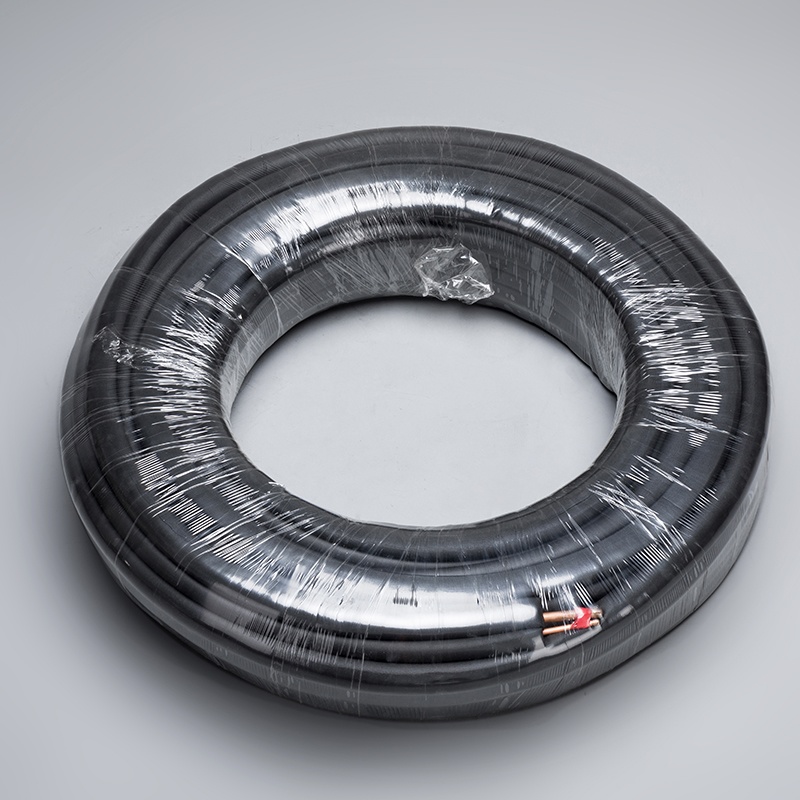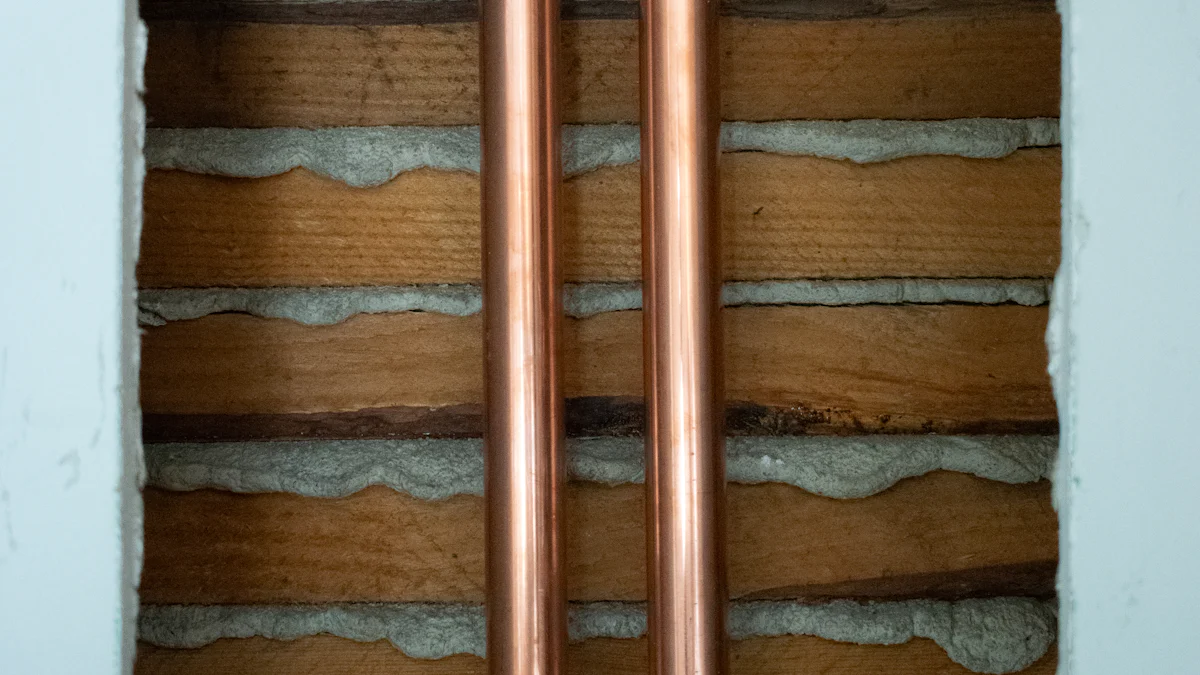What Are the Best Materials for Insulating Copper Pipes?

Write a 'What' blog post on 'Best Materials for Insulating Copper Pipes in HVAC Systems'
Insulating copper pipes is crucial for reducing heat loss and saving energy. By insulating these pipes, buildings can significantly lower their carbon footprint and cut down on heating costs. This blog will provide an in-depth look at the best materials for insulating copper pipes in HVAC systems. From fiberglass to polyurethane foam, each material offers unique benefits and applications. Understanding these options is essential for making informed decisions when it comes to pipe insulation.
Best Materials for Insulating Copper Pipes in HVAC Systems

Fiberglass
Benefits
Fiberglass insulation is known for its low thermal conductivity and efficiency in reducing heat loss.
It offers a wide assortment of products, sizes, and accessories for various insulation needs.
The material provides thermal performance at higher operating temperatures, making it suitable for HVAC systems.
Applications
Fiberglass insulation is commonly used in refrigerant pipe insulation to prevent heat transfer.
It is also applied in VRF pipe insulation to maintain temperature consistency.
Fiberglass is utilized in chilled water pipe and equipment insulation to improve energy efficiency.
Polyethylene Foam
Benefits
Polyethylene foam is lightweight, flexible, and offers excellent thermal insulation properties.
It provides durability and resistance to cracks compared to other rigid insulations.
The material's fiber-free composition ensures long-term effectiveness.
Applications
Polyethylene foam is commonly used in hot and cold domestic water pipe insulation for energy conservation.
It serves as duct liner and duct wrap material for efficient temperature control.
The acoustic attenuation properties make it ideal for noise reduction in pipes and ducts.
Elastomeric Foam
Benefits
Elastomeric foam insulation is versatile and can be applied in various HVAC systems with different requirements.
Its flexibility and low susceptibility to cracks make it a reliable choice for long-term use.
The material has a low-VOC composition, reducing chemical emissions during installation.
Applications
Elastomeric foam insulation is suitable for cryogenic pipe insulation due to its temperature resilience.
It is commonly used in refrigerant pipe insulation to maintain optimal cooling efficiency.
The material finds applications in both hot and cold domestic water pipe insulation for consistent temperature regulation.
Mineral Wool
Benefits
Mineral wool insulation is renowned for its exceptional thermal properties, providing high levels of heat retention and energy efficiency.
It offers superior fire resistance compared to other insulation materials, ensuring safety in HVAC systems.
The material's acoustic insulation capabilities make it ideal for reducing noise transmission in pipes and ducts.
Applications
Mineral wool is commonly used in industrial settings where fire safety is a top priority due to its non-combustible nature.
It is applied in HVAC systems to enhance energy efficiency by minimizing heat loss through pipes and equipment.
Mineral wool serves as an effective solution for insulating steam pipes, maintaining optimal temperatures for steam distribution.
Phenolic Foam
Benefits
Phenolic foam stands out for its exceptional thermal performance, offering high levels of insulation to prevent heat transfer.
It has a closed-cell structure that resists moisture absorption, making it ideal for humid environments.
The material's lightweight composition makes installation easy and efficient.
Applications
Phenolic foam is commonly used in cold mechanical systems to control condensation and prevent energy loss.
It finds applications in refrigeration units to maintain consistent cooling temperatures and improve overall efficiency.
Phenolic foam is utilized in air conditioning systems to enhance thermal insulation and reduce energy consumption.
Thermoplastic Polyethylene Foam
Benefits
Thermoplastic polyethylene foam offers excellent thermal insulation properties, reducing heat loss and improving energy efficiency.
It provides durability and long-term performance, ensuring reliable insulation over time.
The material's flexibility allows for easy installation around complex pipe configurations.
Applications
Thermoplastic polyethylene foam is commonly used in domestic heating systems to conserve energy and maintain consistent temperatures.
It serves as an effective solution for plumbing applications, preventing heat loss in hot water pipes and enhancing overall system efficiency.
The material finds applications in HVAC ductwork insulation, improving thermal performance and reducing operational costs.
Polyurethane Foam
Polyurethane foam insulation is a top choice for insulating copper pipes in HVAC systems due to its exceptional thermal insulation properties and durability. This material offers numerous benefits that make it a preferred option for various applications.
Benefits
Polyurethane foam provides excellent thermal insulation, reducing heat loss and improving energy efficiency in HVAC systems.
It offers durability and long-term performance, ensuring reliable insulation over time.
The material's flexibility allows for easy installation around complex pipe configurations, making it versatile for different setups.
Applications
Polyurethane foam is commonly used in domestic heating systems to conserve energy and maintain consistent temperatures throughout the home.
It serves as an effective solution for plumbing applications, preventing heat loss in hot water pipes and enhancing the overall system efficiency.
The material finds applications in HVAC ductwork insulation, improving thermal performance and reducing operational costs significantly.
By choosing polyurethane foam for insulating copper pipes in HVAC systems, individuals can benefit from its superior thermal properties and long-lasting performance. Whether used in residential or commercial settings, this material proves to be a valuable investment for maintaining optimal energy efficiency.
To summarize, the best materials for insulating copper pipes in HVAC systems include fiberglass, polyethylene foam, elastomeric foam, mineral wool, phenolic foam, thermoplastic polyethylene foam, and polyurethane foam.
Choosing the right insulation is crucial for optimal performance. For instance, mineral wool offers exceptional thermal properties and fire resistance, phenolic foam controls condensation effectively, and thermoplastic polyethylene foam provides flexibility and excellent thermal insulation.
When considering insulation for copper pipes in HVAC systems, individuals should prioritize factors like thermal efficiency, moisture resistance, and ease of installation to ensure long-term energy savings.
See Also
Exploring Optimal Insulation Solutions for Copper Piping
Essential Insulation Varieties for Copper Piping Awareness
Exploring Top Pipe Insulation Options for Your Residence
Key Benefits of Insulating Your Copper Piping System
The Importance of High-Quality Copper Piping in Cooling Efficiency


